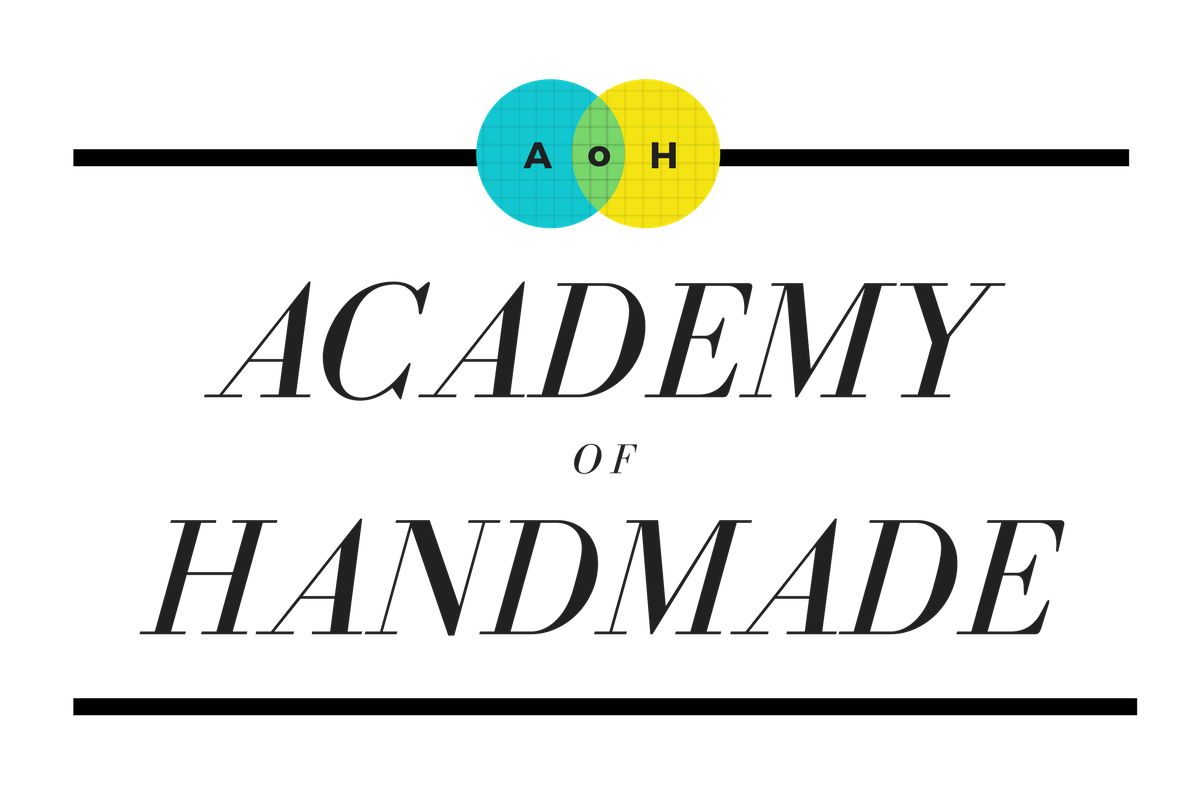Please give a warm welcome to Robert and Stacia Guzzo, founders of Handcrafted HoneyBee. This energetic #ahasmember business team has generously offered to share their recent, dramatic rebranding journey with our community. Robert and Stacia address issues like maker burnout, incorrect customer targeting, and the process of finding that sweet spot where a company's mission and its ideal customers collide. You can read about the series here.
Enjoy, and share your questions and comments below! The entire series can be found here:
read the prologue here
Part 1 (where they talk about their need to change) here
Part 2 (why it takes awhile to get a rebrand right)
Part 3 (what it's like finding a designer)
Part 4 (creating compelling content)
Part 5 (creating and using your brand guide)
Part 6 (creating compelling packaging)
Part 7 (juggling two brands at once)
Part 8 (building a homepage)
Part 9 (launching their new site)
Epilogue (why going through a rebrand helps you love your brand more)
AND read their designer's advice on getting better with graphic design here
It was August 2015, and we had wrapped up the most intense period of activity our business had ever seen.We were spent. Emotionally. Physically. Spiritually. Simply burnt out.
Over the course of 15 weeks, my wife and I had sold natural skin care products and DIY skin care kits at 10 different craft shows up and down the West Coast–from Renegade to Unique L.A. to Patchwork to Urban Craft Uprising. We had flown out to New York to pitch five major retailers at the Etsy Open Call Event. We had written and spoken and planned and promoted our brand so much that we knew it inside-and-out.
And none of it was resonating the way we wanted it to. With more effort and hustle than we had ever done before, we were simply not seeing the results we were hoping for.
So we took stock.
We took our first week off from the business...ever. And even though it was imposed upon us by the crushing burnout that we suffered in August, it was one of the most valuable breaks we have ever taken.
We sat down with a set of guided exercises from my wife’s business mentor, the incredibly talented #ahasmember Lela Barker, and took a good long strategic look at our customer.
In addition, we started cataloging the feedback and customer reactions we had received at the craft shows, in emails, or on social media.
- What were the common reactions the first time a prospective customer looked at our products and marketing?
- Who were customer’s buying for?
- Who was most likely to become a super-fan and repeat buyer?
What we discovered was a revelation. The customer that we had been targeting this whole time was decidedly not the customer that we had actually been serving. Because our understanding of the customer was flawed, the problem that we were solving for that customer was very different from the problem we thought we were solving.
We had envisioned our products as something to help women take greater control of their skin care and the ingredients that goes into it. We saw our ideal customer as someone crafty and artistic looking to dip her toe into a new hobby. We thought that our message of authentic beauty could provide a much-needed alternative to the mainstream message of the beauty industry.
But those weren’t the customers we were actually serving.
When we took a close and careful look at our customers, we saw moms, grandmothers, and aunts buying kits as projects for the young girls in their lives. We found women concerned about establishing good healthy habits for their girls. We heard women who were incredibly distressed about the messages their girls receive everyday in the media and looking for an alternative of hope.
Our current brand was failing to resonate with the customer we had targeted, but it was also failing to effectively serve the customer we were actually reaching.
We had a choice to make: either take a hard look at all aspects of our current brand and fix it to attract our target customer, or go all-in on a ground-up rebrand in order to provide real value to our actual customers.
It was never a hard choice.
But if we were going to set out on a completely new direction for our brand, we had a whole lot of work to do.
Next time: we begin to lay the foundation for our new brand, from defining the ideal customer and her pain points to understanding a completely new marketplace to developing a viable business plan.


